Paris/Ojibwa 2010
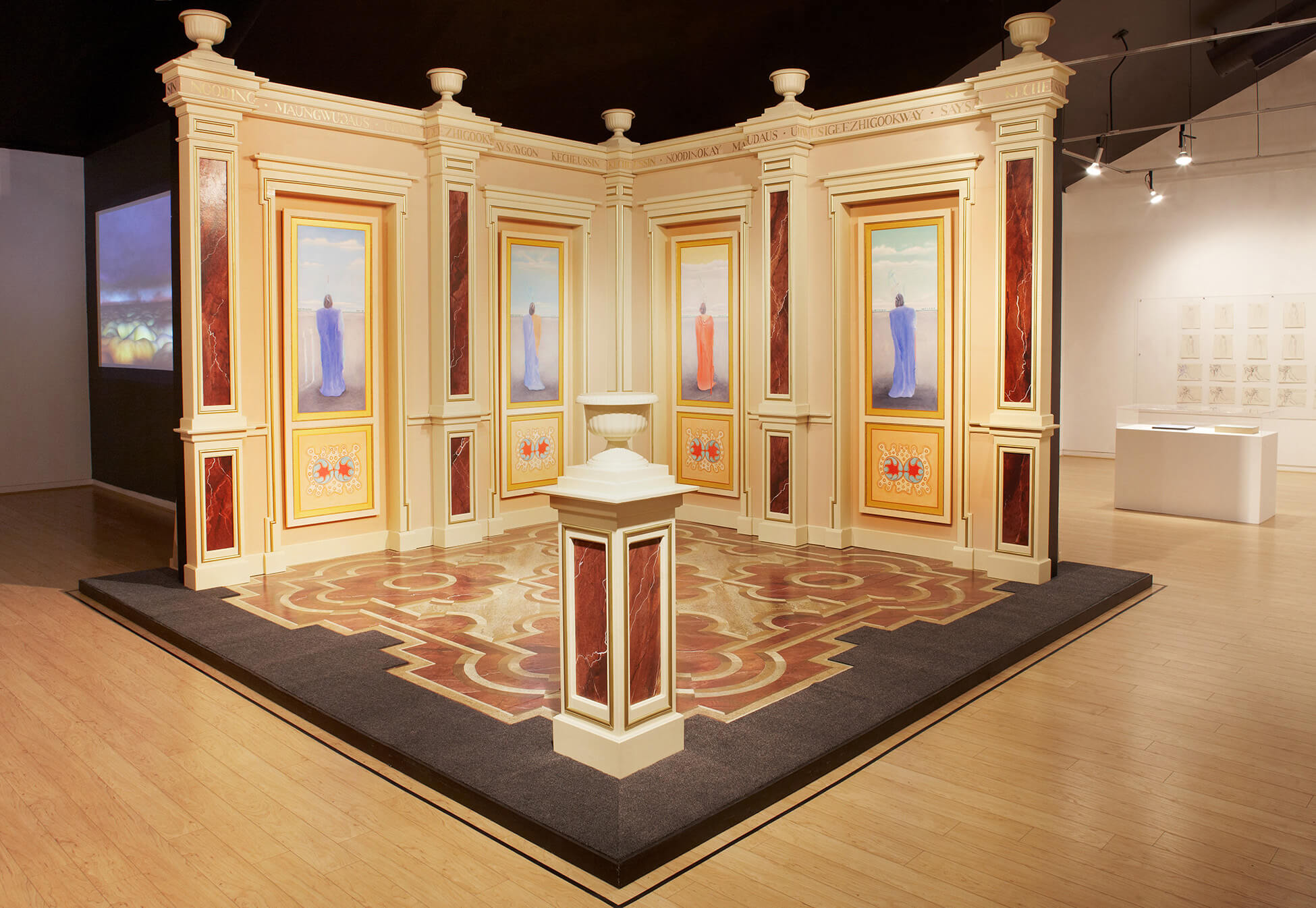
Robert Houle, Paris/Ojibwa, 2010
Multimedia installation
Collection of the artist
Paris/Ojibwa takes the form of a tableau that is simultaneously a salon, theatre, and archive, and that reformulates the history and function of tableaux vivants. With a raised trompe l’oeil marble floor, free-standing colonnade, and four oil paintings on panels, the work recalls the grand Parisian salons where French elites entertained. On the top third of each panel are paintings of human figures—representing a Dancer, Shaman, Warrior, and Healer—wearing blankets or Greco-Roman–style robes, their backs to viewers.
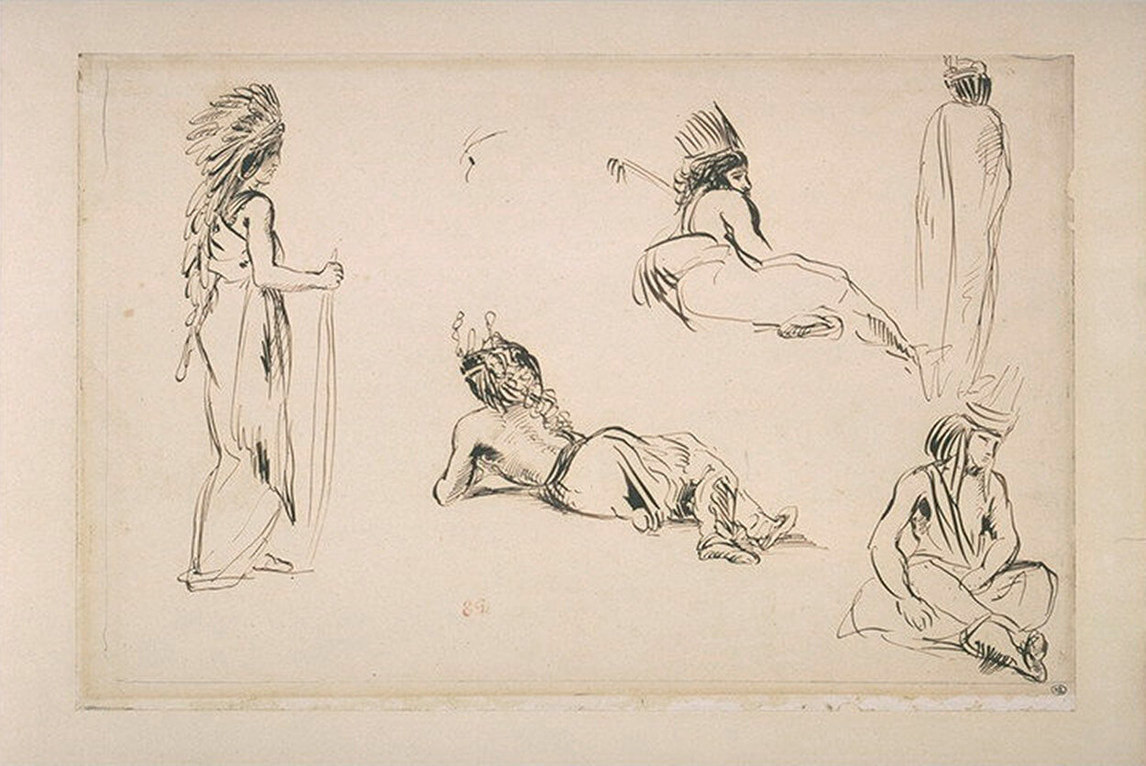
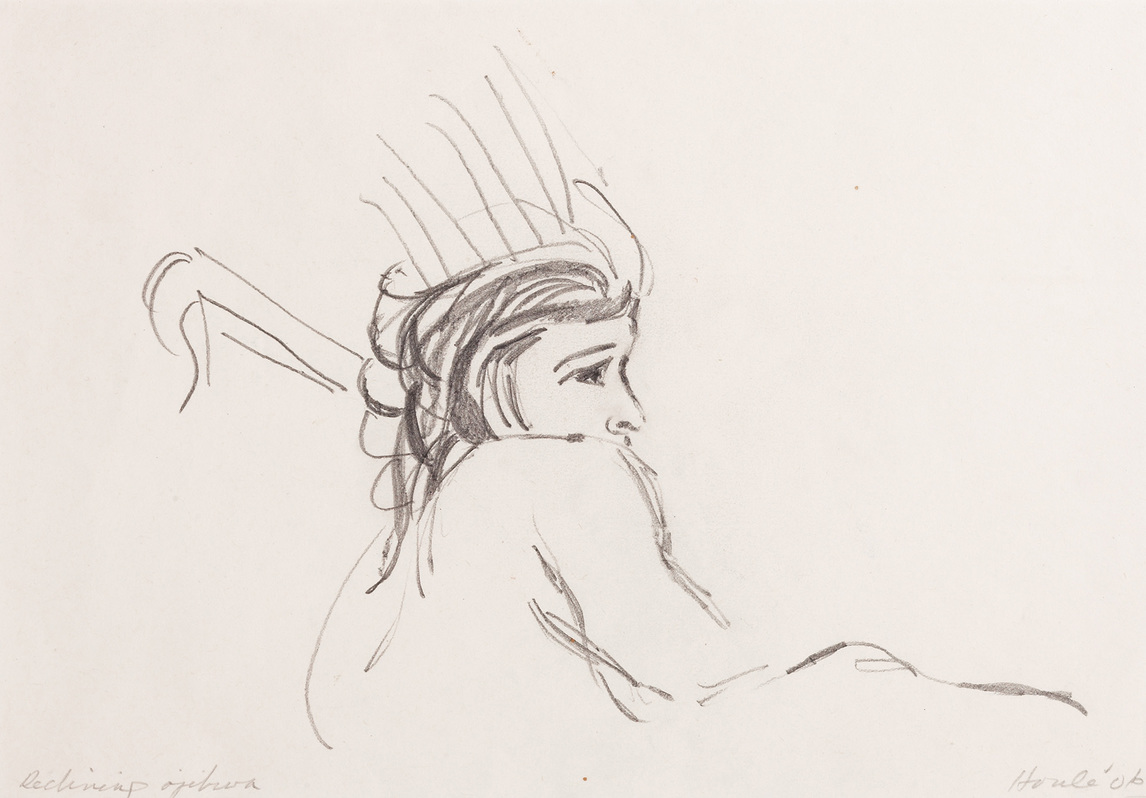
The work was inspired by Houle’s encounter with a sketch by Eugène Delacroix (1798–1863), Cinq études d’indiens Ojibwas, 1845. Delacroix depicted members of a party of travelling Ojibwa performers in various states of repose. While researching, Houle later discovered that the troupe were Mississaugas of the Walpole Island First Nation located on the Great Lakes waterway. His installation takes viewers back to the time when these Ojibwa dancers, led by a man named Maungwudaus, travelled from Canada to Paris to dance for King Louis-Phillipe and an audience of four thousand French citizens. The appearances of the Mississaugas inspired poets, writers, and painters, including Charles Baudelaire (1821–1867), George Sand (1804–1876), and Delacroix. The names of some of the members of Maungwudaus’s troupe are situated at the top of the panels.
The horizon lines over the figures’ heads deflect ethnographic curiosity and redirect the gaze over their shoulders. While the blue skies of Warrior and Shaman appear naturalistic, in Healer and Dancer the area is green and orange, expanding beyond the clouds and hinting at celestial origins of the Mississaugas. Their figuration is soft, slightly fragmented, with plumes fading into the sky. They all face an eastern horizon but outward from the work, in the four sacred directions. Each horizon has a physical referent: a view of the prairie from the Sandy Bay First Nations cemetery near Lake Manitoba. An abstract painting of smallpox is located on the bottom third section of each panel.
In conjunction with the exhibition of Paris/Ojibwa, Barry Ace (b. 1958) performed a traditional dance at the opening in Tuileries Gardens, Place de la Concorde, and at the Canadian Cultural Centre in Paris, honouring the dancers who came before him. Also part of the work is an animation, Uhnemekeka (thundering), commissioned by Houle and produced by Parisian web designer and mathematician Hervé Dagois. In it, jingle dress dancers appear floating in a colour field. Both the jingle dress dance and Ace’s dance are healing performances.
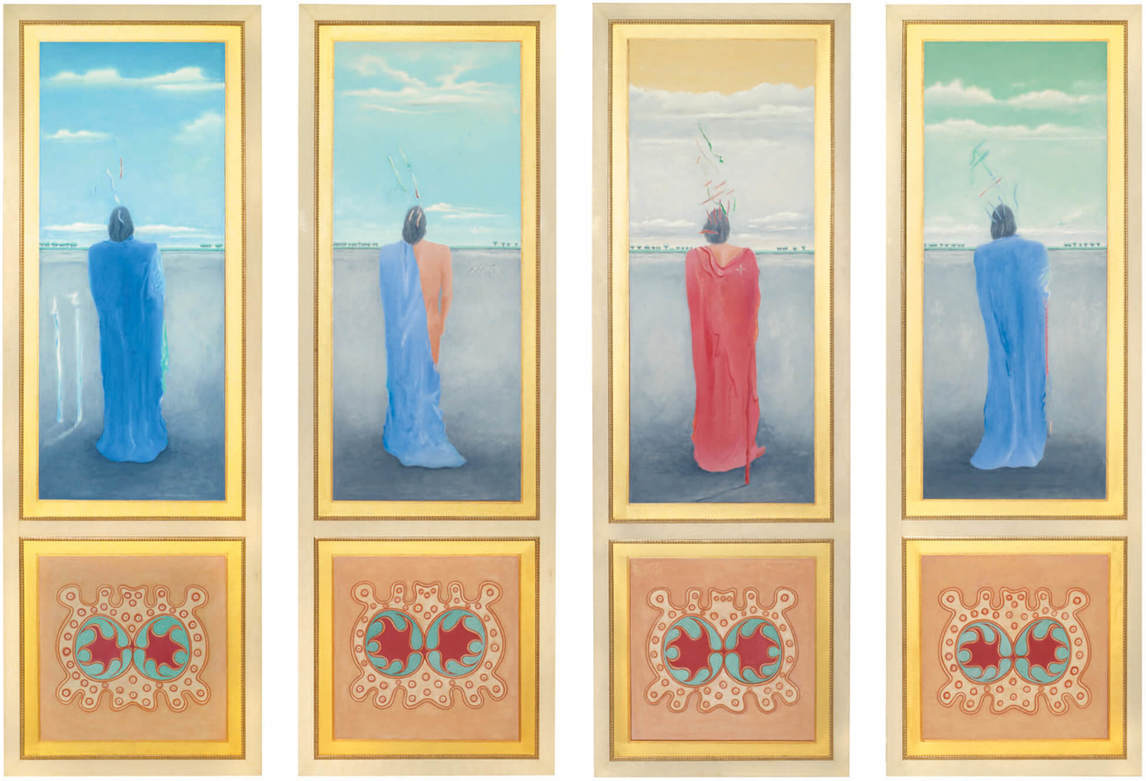
Maungwudaus’s dancers performed for the American frontier painter George Catlin (1796–1872) and became part of Catlin’s Indian Gallery, known for presenting exhibits of what he considered an ancient and disappearing culture of a vanishing race. The Ojibwa that Houle rendered face their ancestral homeland from a cemetery across the ocean. Houle transports their story to the present day. His research into the journals of Maungwudaus and his creation of Paris/Ojibwa breathes life back into the forms of the Mississauga dancers, making possible their transatlantic spiritual return from Paris to his home in Sandy Bay, a metaphor for Turtle Island.

 About the Author
About the Author
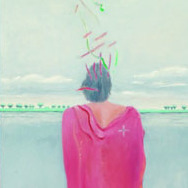 More Online Art Books
More Online Art Books
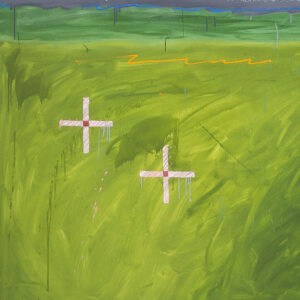 Acknowledgements
Acknowledgements